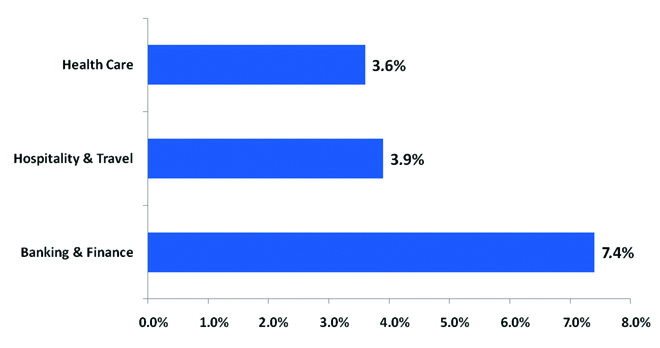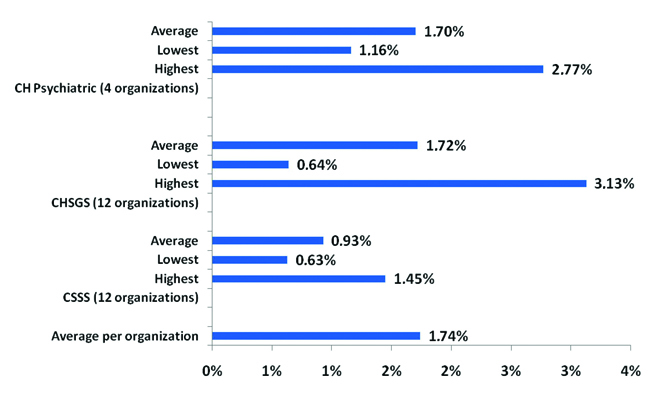By Jean Huot
Jean Huot, CIO at the CHUM and MUHC, describes the challenges of implementing IT solutions in health care —Report from a presentation at the 2010 conference of the MUHC-ISAI
The core business of health care is first and foremost providing the best care. Academic health centres also have research, teaching and technology assessment roles. While IT is increasingly part of the core business of health care, it is not yet on the same plane as the banking and airline sectors.
Justifying investment
The Gartner Group found that in North America, healthcare spending in IT in 2009 was, on average, half what it was in the banking and airline sectors (Figure 1) There is a lot of variation between institutions and between jurisdictions. Québec spends only half the North American average, or 1.7%, again with important variations even in the Montreal region (Figure 2).
While justifying investment takes up much energy today, once something is accepted as a way of doing business, the level of investment is no longer questioned. Biomedical devices have already reached that tipping point and are considered integral to providing health care.
The healthcare environment
The context for health care is somewhat different from other industries. The external environment is complex, with many stakeholders to satisfy, each with somewhat different goals. Internally, health care must contend with a high level of autonomy among clinicians, who are there to give the best care according to their own professional guidelines in a context of cost containment.
The IT strategy has to take into account that diversity of perspectives, and the clinician needs to be at the centre of the adoption, with support from all layers of the organization. The technology is there because it answers objectives that are meaningful to clinicians: improving quality and productivity, bringing research evidence quickly back into clinical care, and maintaining safe infrastructure.
The clinical information system now being implemented at the MUHC and the CHUM was selected by clinicians within these organizations. It is now being rolled out in other organizations in Montreal and elsewhere in the province.
Clinicians should also define the implementation strategy. We created the position of Chief Clinical Officer of Technological Transition in both institutions, and they report directly to the Director General, not to Information Systems-Information Technology (IS-IT). This has assured a smooth system roll-out and high adoption at both institutions.







